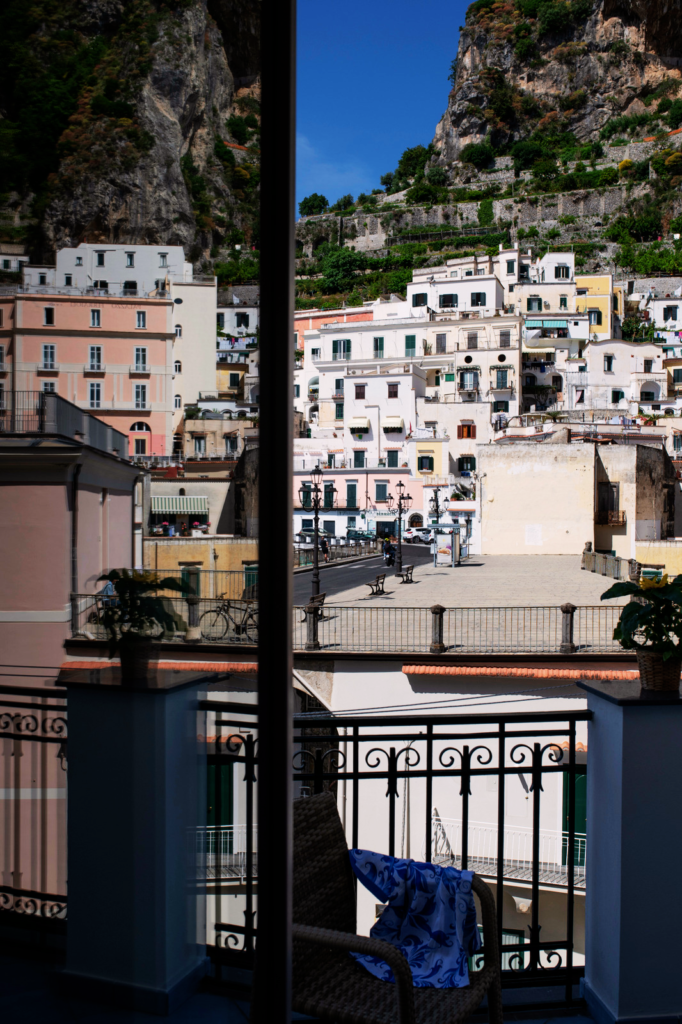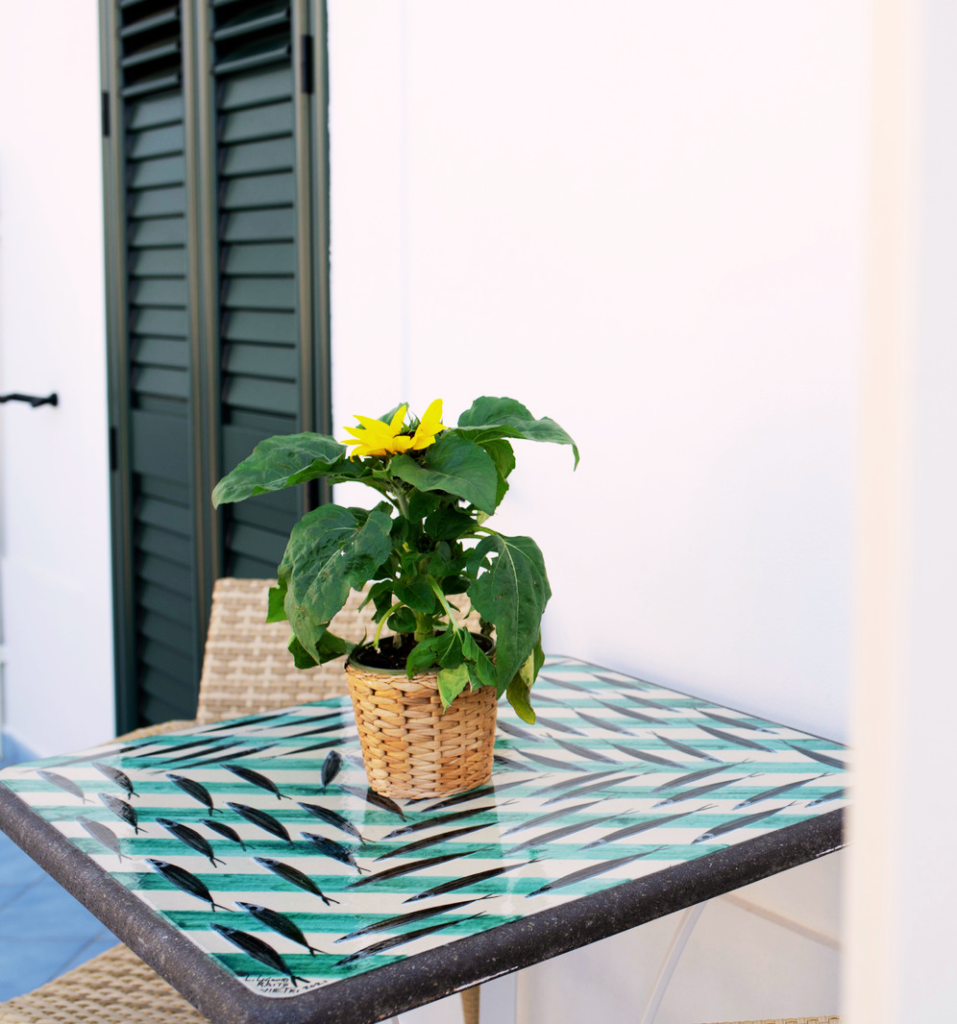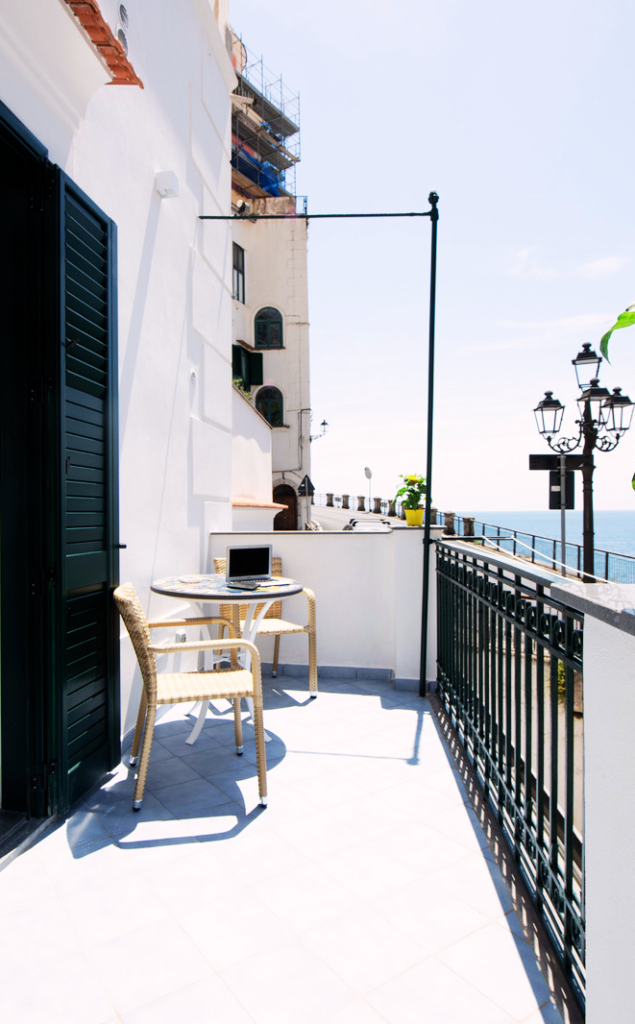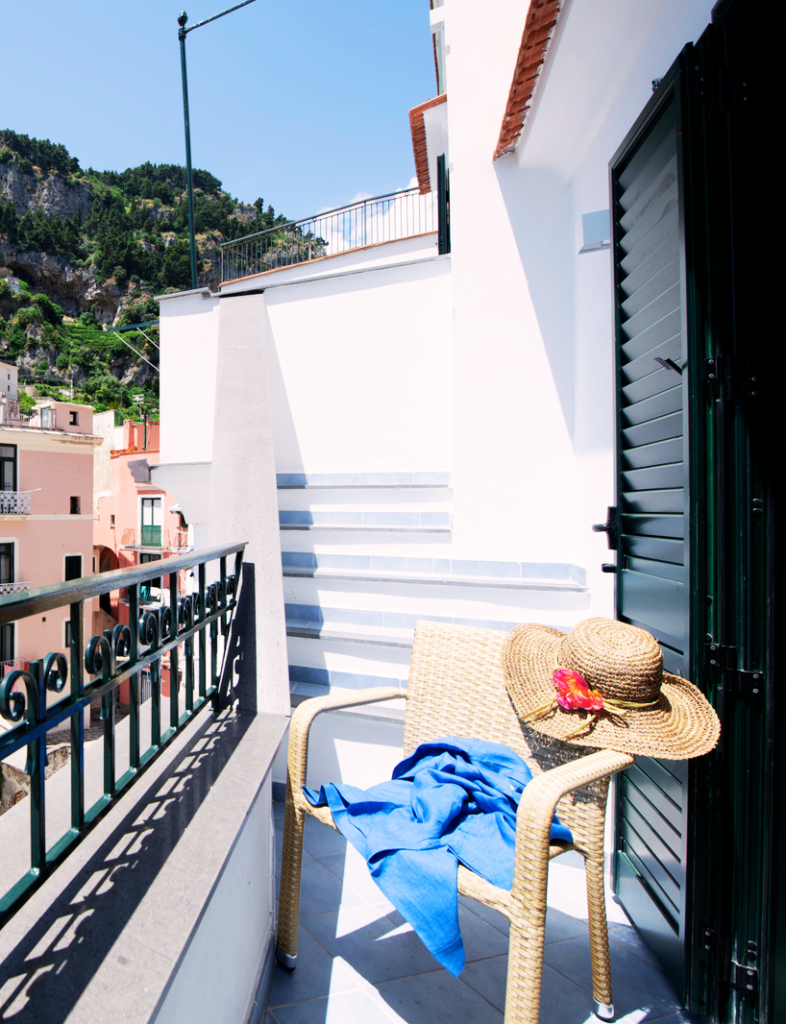Maison Escher Group is a network of modern apartments distributed on the territories of Atrani, Amalfi and Pogerola. Immersed in the scents, flavors, and colors of the Divine, our Maison welcomes every year guests who are attentive to details, passionate about contemporary art and the Greco-Roman world. We have transformed our apartments into all-round experiential devices, inserting inside them paintings by emerging local artists, ceramics of the best Vietri tradition, and giving them names that refer to the mythical toponymy of these territories. We are convinced that the collective and cultural memories of places should be protected and eternalized now more than ever. Maison Escher group is a sensibility towards these memories, an enhancement of the territory, a cult of hospitality. We look forward to seeing you


Casa Seirenes
νησίδια τρία προκείμενα ἔρημα πετρώδη, ἃ καλοῦσι Σειρῆνας
Three rocky, uninhabited islets ahead that they call Seirenes
Strabo, Geogr., 1,2,12
Seirenoussai, when the gulf was called Cumano, was the name of the promontory of Sorrento, also known as Athenaion and corresponding to today’s Punta della Campanella; Seirenes were called the three nearby islets, deserted and stony, known today as Li Galli. […] The current Li Galli, recalling even it directly the image of the siren hybrid-winged, would be the modern reflection of the ancient Seirenes. […] So Seirenoussai, the promontory, recalls the life of the sirens, Seirenes, the islets, their destiny of stone.
Federico E., Seirenoussai o Seirenes. Una semplice nuance? Strabone, le Sirene, Li Galli
Discover Casa Seirenes

Casa Posides
Libertorum praecipue suspexit Posiden spadonem, quem etiam Britannico triumpho inter militares uiros hasta pura donauit
Among the freedmen he particularly admired the eunuch Posides, to whom, after the triumph with the Britons, among the experts of militia, he gave the pure rod.
Gaius Suetonius Tranquillus, De Vita Caesarum Cl. 28.1.1
The emperor Tiberius bought the island (Capri) from the municipality of Naples and built twelve villas, in which he placed, as in a Versailles ante litteram, illustrious exponents of the Roman patriciate. On the wave of Tiberius senators and equites built maritime villas along the coasts of Sinus Neapolitanus (Gulf of Naples) and Sinus Paestanus (Gulf of Salerno). Among these, the freedman Posides, enriched in the shadow of Claudius, would have built, according to Matteo Della Corte (1937), the villa of Positano, whose name is derived from his name. The villa, recently brought back to light in part, shows valuable frescos of the I century A.D. Opposite, on the islet of Gallo Lungo, there are the remains of a small mooring with pilae and arches and of a cistern.
Giuseppe Gargano
Discover Casa Posides

Casa Escher
[…] The word “Metamorphose” itself serves as a point of departure. […] each bird is transformed into a rhomb, and this gives rise to a second association of ideas: a hexagon made up of three rhombs gives a plastic effect, appearing perspectively as a cube. From cube to house is but one step, and from the houses a town is built up. It’s a typical little town of southern Italy on the Mediterranean, with, as commonly seen on the Amalfi coast, a Saracen tower standing in the water and linked to shore by a bridge. [It is the town of Atrani.]
‘The lectures that were never given’, in Escher on Escher: Exploring the Infinite, 1989
Discover Casa Escher

Casa Regina
That pretty little cove set in the green of the coastal mountains, rich in game, crossed by a joyful brook, certainly attracted the attention of the Roman patrician. Perhaps a senator or a consul, who sailed on the sea already crossed by Odysseus and Aeneas and inhabited by the malicious sirens. Perhaps he was directed by friends in the not far villa of Positano or in that of Li Galli. Perhaps someone in Rome had told him to visit that coastline which from the Etruscan Marcina reached as far as Punta Campanella.
Di Vito Pinto
That small cove was in the place where now stands Minori, the city where there are the remains of what was the Villa Marittima of the Roman patrician. His name is not known, but looking at what remains of his “holiday” (we would say today) certainly was a wealthy person, cultured and refined. The testimonies surviving the wear and tear of time testify to a particular elegance of this residence that the owner had built for his otium, to live when he had.
The dating of its construction has been fixed to the first century AD, in those years ranging from 30 to 40. Next to the building flowed the river (Reghinna Minor) that was properly exploited in the design of the villa, for the supply of running water for both the scenic fountains and for the use and for the baths that the patrician thought good to be built. The entrance of the villa was directly on the sea.
Di Vito Pinto
Discover Casa Regina



